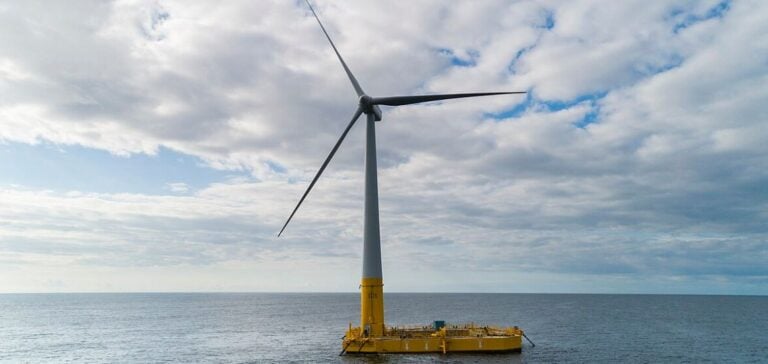Deep Wind Offshore submits its first application for the development of a floating wind farm in the Baltic Sea. The Erik Segersäll project, located 74 km east of Nynäshamn, is expected to generate 6.5 TWh per year, equivalent to the total consumption of the city of Stockholm. This initiative strengthens the company’s position in the Swedish renewable energy market. After three years in Sweden, Deep Wind Offshore has also applied for a fixed wind farm, Olof Skötkonung, in the Bothnian Sea. The project is expected to generate up to 7.5TWh per year, covering a large part of the electricity needs of Gävleborg and Uppsala counties.
Impressive energy potential
The Erik Segersäll floating wind farm is located in an area defined as suitable for wind power by the Swedish Sea and Water Agency. The project targets a total installed capacity of 4.5GW, with a potential annual output of up to 19.5TWh, enough to supply 2.5 million people in the Stockholm area. The first production phase of 6.5TWh, equal to the consumption of the residents of the city of Stockholm, is a key milestone. The Olof Skötkonung fixed wind farm will also make a significant contribution, with a planned output of 7.5 TWh per year.
Economic impact and local collaboration
Deep Wind Offshore is committed to working with local suppliers and creating economic opportunities for the surrounding communities.
“We are well established in Sweden, with local employees driving the projects forward. We will work with local suppliers and contribute to local value creation,” says Knut Vassbotn, CEO of Deep Wind Offshore.
This project represents an opportunity for Sweden to strengthen its renewable energy capacity while stimulating the local economy. Collaboration with local businesses is essential to maximize economic and social benefits.
Challenges and prospects for the future
The development of offshore wind farms, especially floating ones, presents technical and environmental challenges. However, these projects are crucial to achieving Sweden’s decarbonization objectives. The growing demand for renewable energy and Deep Wind Offshore’s commitment to sustainability promise a greener energy future.






















